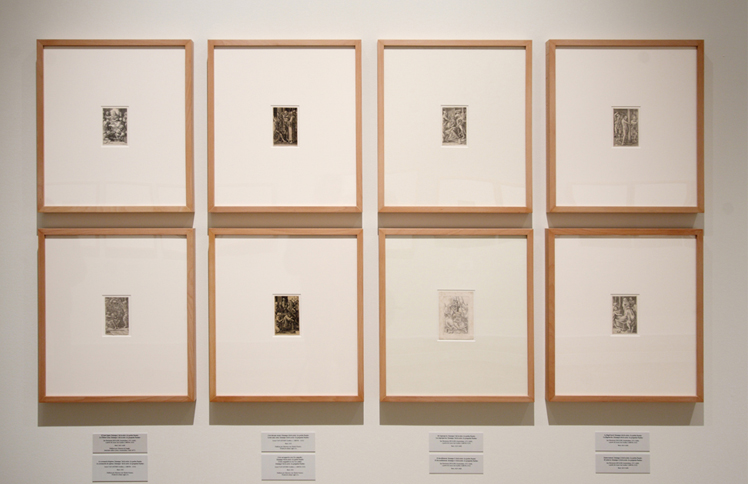
- The collection
-
Works
-
German prints
- Monogrammist AG
- Michael Wolgemut
- Martin Schongauer
- Daniel Hopfer
- Albrecht Altdorfer
- Hieronymus Hopfer
- Lambrecht Hopfer
- Monogrammist HL
- Jacob Binck
- Sebald Beham
- Barthel Beham
- Georg Pencz
- Heinrich Aldegrever
- Virgil Solis
- Monogrammist IB
- Monogrammist FG
- Theodor de Bry
- Jost Amman
- Johann Theodor de Bry
- Gilich Kilian Proger
- Monogrammist RDS
- Christoph Jamnitzer
- Paul Flindt
- Adam Fuchs
- Wenceslaus Hollar
- Christoph Schmidt
- Johann Wilhelm Heel
- Christoph Weigel
- Leonhard Heckenauer
- Maria Magdalena Küsel
- Johann Andreas I Pfeffel
- Maria Philippina Küsel
- Gottlieb Herrmann
- Gottfried Stein
- Martin Engelbrecht
- Johann Adam Delsenbach
- Johann Georg Hertel
- Matthäus Herz
- Johann Rudolph Schellenberg
- Balthasar Anton Dunker
- German anonymous c. 1780
- Carl Christian Glassbach
-
Flemish and Dutch prints
- Monogrammist FVB
- Lucas van Leyden
- Master of the Horse Heads
- Allaert Claesz.
- Gerard de Jode
- Hans Bol
- Philips Galle
- Harmen Jansz. Muller
- Johannes van Doetecum the Elder
- Lucas van Doetecum
- Hendrik Goltzius
- Arent van Bolten
- Jan Saenredam
- Adriaen Muntinck
- Nicolaas de Bruyn
- Jan Harmensz. Muller
- Jacob Hoefnagel
- Hendrik Hondius I
- Pierre Firens
- Jean Valdor the Elder
- Christoffel van Sichem III
- Willem Panneels
- Hans Janssen
- Theodoor van Thulden
- Michael Hayé
- Quirin Boel
- Dutch anonymous, c. 1650
- Jan de Bisschop
- Frederick de Witt
- Pieter Schenk I
- Gerrit Visscher
- Dutch anonymous, 1728
-
Italian prints
- Andrea Mantegna
- Jacopo de'Barbari
- Giovanni Antonio da Brescia
- Marcantonio Raimondi
- Agostino Veneziano
- Giovanni Jacopo Caraglio
- Battista Franco, il Samolei
- Enea Vico
- Monogrammist AP
- Antonio Tempesta
- Giovanni Andrea Maglioli
- Cherubino Alberti
- Italian anonymous, c. 1585
- Italian anonymous, c. 1591-1690
- Francesco Villamena
- Cesare Domenichi
- Odoardo Fialetti
- Giuseppe Caletti, il Cremonese
- Stefano della Bella
- Giovanni Battista Galestruzzi
- Pietro Santi Bartoli
- Girolamo Ferroni
- Francesco Bartolozzi
- Giovanni Folo
- Bartolomeo Pinelli
-
French prints
- Étienne Delaune
- René Boyvin
- Pierre Milan
- Jean Toutin
- Michel Lasne
- Antoine Jacquard
- Jacques Callot
- François Perrier le Bourguignon
- Jean de Saint-Igny
- Monogramist BL
- Louis Ferdinand Elle l'Aîné
- François Chauveau
- Jean Lepautre
- Jean Vauquer
- François de Poilly the Elder
- Paul Androuet du Cerceau
- Jean-Baptiste Monnoyer
- Jean Papillon the Elder
- Joseph Parrocel
- Étienne Gantrel
- Bernard Picart
- Nicolas Chasteau
- Jean Bourguet
- Anne Claude Philippe de Tubières, Comte de Caylus
- Claude Augustin Duflos
- Jean Baptiste Guelard
- Jacques Saly
- Gilles Demarteau
- French anonymous, c. 1750
- Pierre Demachy
- Juste-François Boucher
- Philippe Louis Parizeau
- Jean Démosthène Dugourc
- Henri Marais
- Alexis François Girard
- Spanish prints
- Ornament
- Weibermacht
- Emblemata / Alba Amicorum
- Vanitas / Memento Mori
- The 70 faces of Bruegel
- Buffoons & Jesters
-
German prints
- Exhibitions
- Publications
- News
- Commented works

  The Mariano Moret Collection is a private collection of Old Master prints focusing mainly on sixteenth-century engravings on metal. It is a private collection with a public mission, the main purpose of which is to promote wider knowledge of one of the lesser known artistic disciplines, providing access to works which, because of their exceptional nature and the strict conservation measures they require, are rarely exhibited in public.
  The uniqueness and importance of the works contained in the Mariano Moret Collection make it one of the most outstanding collections of Old Master prints in Spain, as it includes a large number of works of extraordinary rarity by distinguished artists who are not represented in any other Spanish collection. Its remarkable holdings of German and Flemish/Dutch Renaissance prints are only comparable with those of the Biblioteca Nacional de España, and it has thus become the benchmark collection at national level for studying the work of some of the essential artists in the history of printmaking, such as Lucas van Leyden or the Little Masters.
  The collection is structured around two core areas. The first of these is the Dutch school, centring on the figure of Lucas van Leyden and the influence exerted by this exceptional artist on the generations of printmakers that followed him. The second nucleus of the collection is devoted to German Renaissance prints, mainly the work of the Little Masters and the Nuremberg printmakers of the generation after Dürer, as well as the Hopfers of Augsburg, inventors of the technique of etching. From these two central concerns a number of subplots unfold, and tracing and interpreting them enhances the interest and attraction of the collection and enables it to develop in a more cross-sectional dimension: ornamental prints, the Weibermacht or “Power of Women”, the grotesque and the unusual, war and the representation of violence, spirituality, myth, popular subjects, love, death… iconographic curiosities and veiled messages conveyed through the stories of gods and mortals.